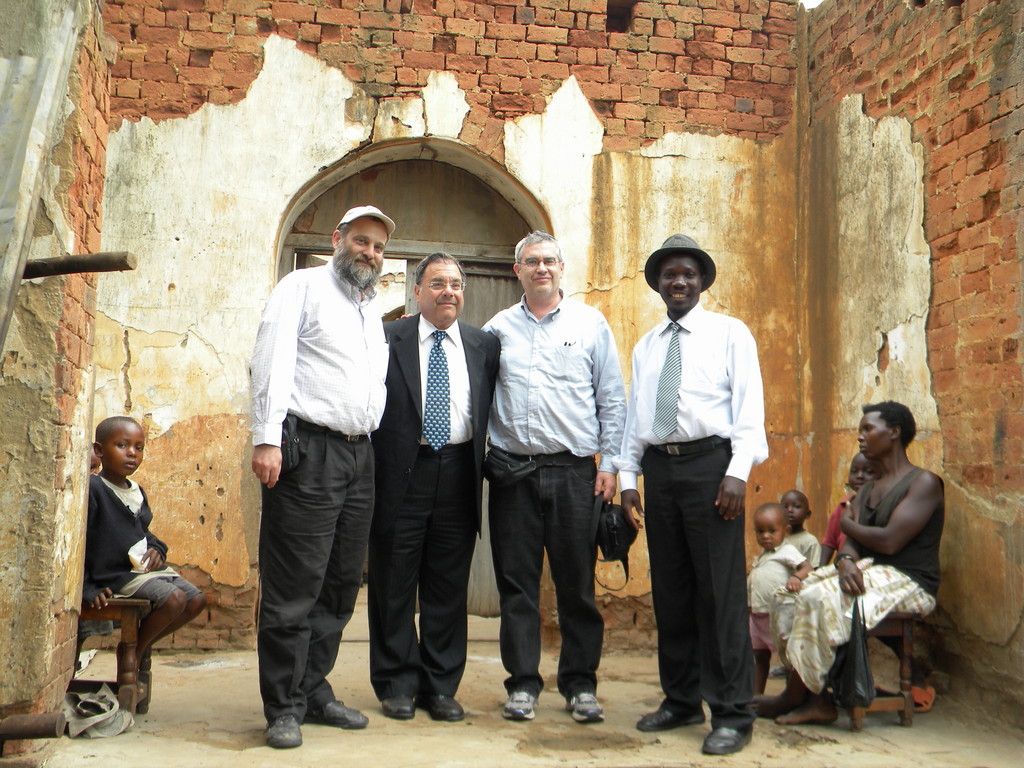Halachic adventurists with a palette for the exotic
When planning a summer trip, Uganda is a less common destination than, say, Florida or Israel. But for Rabbi Dr. Ari Zivotofsky and Dr. Ari Greenspan, a trip visiting Jewish communities throughout East Africa was nothing out of the ordinary.
The two have been traveling to far-flung communities for the past 30 years, collecting ancient traditions and mesorahs as a way to preserve links to Jewish history. On their most recent journey, the itinerary included Egypt, Ethiopia, Bahrain, Djerba, Somalia, Kenya and Croatia.
Zivotofsky and Greenspan have done extensive research on exotic kosher animals, studying everything from water buffalo to locusts to swordfish. Their interest in this field began at Yeshivat Har Etzion (“The Gush”) where the two met and studied the laws of shechita together. At the time, someone wanted to know if they could shecht a pheasant, which led to the question: Is a pheasant actually a kosher bird?
The Torah lists twenty-four birds that aren’t kosher, implying that every other bird is permissible to eat. However, we are unsure of the identity of these birds, and therefore only treat as kosher those birds with a reliable mesorah from our ancestors.
“We realized that in the last 70 years, all shechita of birds is commercial,” said Greenspan. “The birds that are [typically] slaughtered are only the four or five birds that are commercially viable.”
Zivotofsky and Greenspan learned that different communities had maintained their own mesorahs regarding the kashrut of local birds, and that many of these traditions are disappearing as the older generation of rabbis and shochets is passing away.
“[We] started understanding the significance of mesorahs,” said Zivotofsky. “[We saw many] different communities and rich traditions that are being lost.”
And so, the two men set out to preserve the chains of history and halacha before they became lost forever. They began looking for shochtim from different cultures who could teach them about ancient mesorahs that have been passed from generation to generation.
“These men were in their 70s or 80s, and today they’re dead,” said Greenspan. “We were able to touch this link to Jewish history. We try and garner from them their memories and traditions.”
Last Shabbat, Zivotofsky (who grew up in West Hempstead) and Greenspan spoke as scholars-in-residence at the Young Israel of West Hempstead. They described the Jewish communities of Africa, the mesorot and signs of exotic kosher animals, and the “search for the holy snail” of tekhelet.
In addition to their public speaking appearances, the two men seek to preserve ancient traditions by organizing mesorah yom iyuns and halachic seudahs around the world. On Sunday July 24, they ran a mesorah dinner in Chicago, where participants learned about halachic issues and Jewish customs from around the world while dining on exotic kosher foods such as elk, quail, red deer, fleishig eggs, and shibuta.
The first mesorah dinner was held in Jerusalem in 2002. Two subsequent events were held in conjunction with the Orthodox Union: one in New York (2004) and one in Los Angeles (2007). Last summer, a second Jerusalem dinner was held, featuring a “dessert” of locusts that had been raised by the Agriculture Ministry.
“Our goal is to preserve traditions,” said Zivotofsky. “It’s important to open your mind, and not to be narrowly attuned just to your surroundings.”






